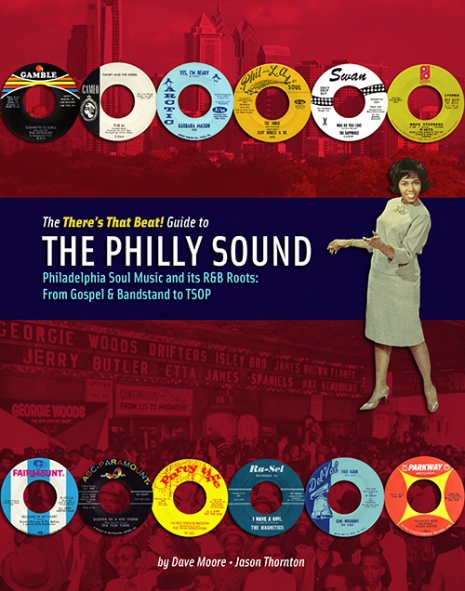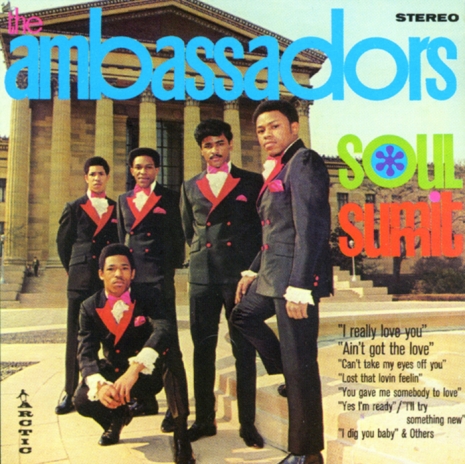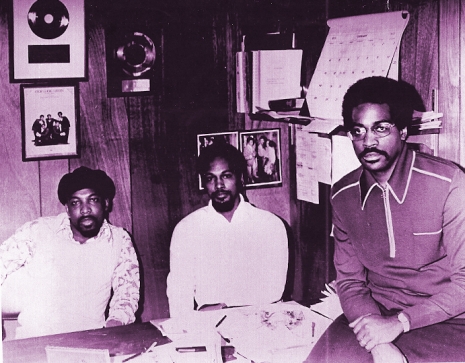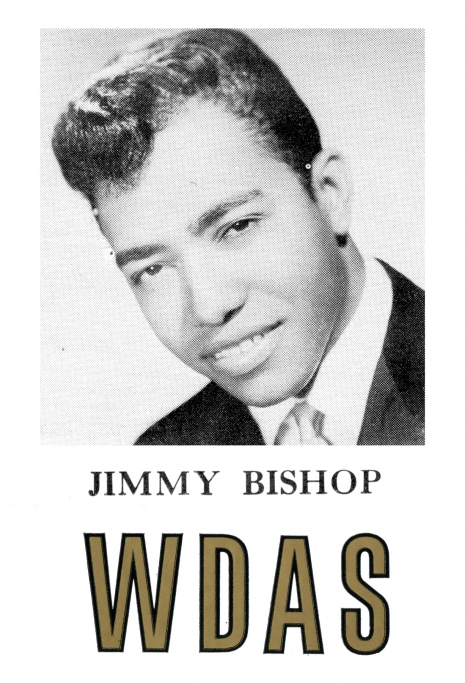
I’ve known Jason Thornton for most of my life. He’s one of the world’s consummate crate diggers and has amassed (and sold and then amassed again) a vinyl collection of epic proportions. He started collecting Elvis’ Sun Records 45s with his father when he was six years old, the two of them scouring garage sales and junk stores panning for plastic gold. By the time he was twelve, he was already an otaku-level “sophisticate” when it came to music, especially classic soul and doo-wop, rockabilly and what is now called “old skool” rap and hip-hop, but was then still a brand new thing. When I met him, he was part of a group of older record-obsessed friends in my hometown of Wheeling, WV. From time to time, when he was still in high school, he’d stay on my couch in New York and spend a few days vacuuming up amazing and obscure finds in lower Manhattan’s record stores with the zeal of a first-time visitor from Japan plotting out his record shopping with ruthlessly military efficiency.
Fast forward a… uh “few” years (okay thirty of them) and he’s a married middle-aged graphic designer working in the Boston area. In recent years Jason (the designer) and his partner Dave Moore (the writer/editor) an Englishman based in Spain have been publishing the well-respected There’s That Beat, a rare soul music fanzine. They were asked by the Swedish book publisher Premium Publishing to channel their expertise into a book on the history of Philadelphia’s music makers and the result is the absolutely mind-bogglingly detailed and comprehensive—not to mention freaking massive—guide to the City of Brotherly Love’s music scene ever published The Philly Sound: Philadelphia Soul Music and its R&B: From Gospel & Bandstand to TSOP. Chock full of rare photos, label scans, sheet music covers, vintage print ads and lots and lots of great stories, it’s hard to imagine how anyone could ever come along and top this truly definitive volume in the future. It’s nearly 700 pages, printed in color on thick glossy paper and weighs more than my dog, so I’m guessing about ten pounds.
And that’s the problem. For reasons related to the shipping costs of such a huge book, Amazon opted not to take on The Philly Sound: Philadelphia Soul Music and its R&B: From Gospel & Bandstand to TSOP, but you can buy it directly from the authors at the There’s That Beat website.
I asked Jason and Dave some questions via email.
Dangerous Minds: A “music city”—be that Detroit, Chicago, Nashville, New York, Los Angeles, London or Kingston, Jamaica—presupposes an infrastructure to support the business and practical side of things (recording studios, a pool of good musicians, record labels, venues, radio stations, etc). What made Philly such a “strange attractor” for soul musicians?
Jason Thornton: Like most industrial cities, Philadelphia drew lots of black people from the south to seek jobs. Those people brought their talents up north to help create some incredible music, many honing their craft in church and under streetlamps. With the invention of the 45rpm record, it became very inexpensive for people to cut a record and get it into the marketplace. On top of that, the popularity of American Bandstand, a show that started locally and went national, was inspiring people to rush into recording studios and try for that unique exposure. Philadelphia was also a major distribution point for records getting out into the world and Dick Clark was financially linked to distributorships and record labels, not to mention all of the great influential DJs from the many radio stations that catered to black audiences. With all those factors combined, Philadelphia had the perfect terroir for all sorts of music and all of the vehicles in place to help it thrive.
Dave Moore: It was the city’s emergence as a pivotal gospel center via the music of The Ward Sisters, and The Dixie Hummingbirds, alongside Billie Holiday’s blues recordings during the era of the “race records” that first put the city’s black artists on the musical map. With the rock ‘n’ roll explosion of the 50s, white record label owners were looking for white interpreters of this musical phenomenon and Philadelphia-born Bernie Lowe’s Cameo and later Parkway, identified the Italian teen idol as being a great commercial vehicle. His company dominated the record market on the back of American Bandstand with an artist roster that included Frankie Avalon, Bobby Rydell and Fabian.
After the Beatles and the British Invasion just about destroyed Cameo/Parkway’s business, waiting in the wings with a new kind of black music were the likes of Maurice Bailey Jr., Kenny Gamble, Joe Stevenson, Leon Huff, Thom Bell, Luther Randolph, Johnny Stiles and Weldon A McDougal III, John Madara and David White, Richard Barrett and Wally Osborne. During the early sixties these musical entrepreneurs along with others, created a platform that delivered many of the classic Philly soul records of its golden era. With one eye on Detroit’s successful Motown company, the city’s musical landscape was sculpted by these people, some more successfully than others. The pinnacle of Philadelphia’s second musical coming came about when Joe Tarsia purchased a building on N 12th St just round the corner from 309 Broad St (the old Cameo Studio).
With Joe’s expertise as a sound engineer, the foundations of MFSB coming together at Frank Virtue’s Studio and Gamble and Huff enjoying success with the Intruder singles, the fuse of Philadelphia’s rocketing success was lit. International hits by Billy Paul, the O’Jays. Harold Melvin and The Blue Notes, McFadden And Whitehead, Jerry Butler, The Jones Girls all ensured that Gamble and Huff’s “The Sound Of Philadelphia” took pride of place in the city’s musical achievements.

Over the decades who were the power players of Philly Soul?
Dave Moore: I guess the guys who really rose to the top of the city’s musical hierarchy are probably identified in three distinct groupings during the timeline of the 50s to the 70s.
Firstly, in the ‘50s, there were those that enjoyed the initial pop success i.e. Bernie Lowe, Kal Man and Dave Appell via America’s teenage awakening years and Dick Clark’s ascendancy with Bandstand. Although not all soulful outings, the labels they established would prove useful apprenticeships for many of the city’s future soul stars.
The 60s saw the emergence of the black influence both in front of and also behind the microphones and mixing board. Jimmy Bishop’s WDAS radio show put him on top of the promotion pile and his Arctic label was unlucky not to recreate Berry Gordy’s success with Motown. Jerry Ross was enjoying much success with a number of acts and labels and the decline of Cameo/Parkway saw openings for Kenny Gamble, Leon Huff and Thom Bell amongst a swathe of young ambitious entrepreneurs.
As the 70s emerged the undisputed crown kings of Philly Soul were The Mighty Three: Kenny Gamble, Leon Huff and Thom Bell. Joe Tarsia had created the perfect cauldron at Sigma Sound Studios and with MFSB (and particularly Ronnie Baker, Norman Harris and Earl Young as its heartbeat), delivering unrivaled talent, The Mighty Three drove the juggernaut that was a worldwide international success: The Sound Of Philadelphia.

Leon Huff, Thom Bell and Kenny Gamble
What are some songs that best exemplify the Philadephia sound? What was “the TSOP”?
Dave Moore: “The Sound Of Philadelphia” has become synonymous with the green record label bearing the same name owned by Kenny Gamble and Leon Huff. They could certainly lay a strong claim to be so. The music created by their company via Joe Tarsia’s Sigma Sound Studio was certainly an identifiable and unique sound of the time incorporating lush arrangements, bongo-driven intros, lavish string components and of course with the backing voices of the Sweethearts of Sigma, MFSB’s skills were allowed to breathe fully. If I had to select a solitary song that exemplified this cauldron of talent I’d plump for The O’Jays’ “I Love Music.” Comprising a tell-tale intro, metronome-like drumming from Earl Young, plus effervescent vocals from a real iconic singing group, the whole ensemble are at the top of their creative game.

The book could kill someone if dropped on them from a second story window. Just the size and heft of it, and the glossy color printing and the design all send a clear message that this is a quality product. I can’t imagine a more definitive guide to the Philly sound ever being produced. Where did your passion for Philly soul first come from? What was the song, or the performer who turned you on to the music?
Jason Thornton: For me, the love of Philadelphia’s music goes all the way back to spinning my father’s copy of “Fabulous” by Charlie Gracie on a 78 and the Dreamlovers’ “When We Get Married” on 45 but I really started to pay more attention to Philly records once I heard “Yes I’m Ready by Barbara Mason on the Arctic label. From there, the passion grew deeper, after having been exposed to deeper cuts via the world of Northern Soul. Songs like “She’s Wanted” by Larry Clinton, “Groovin’ at the Go-Go” by the Four Larks, “It’s Against The Laws of Love” by the Volcanos are songs that pack a particular punch to them and never ever get old. It’s no coincidence that they were all produced by the Dynodynamics production team of Weldon A. McDougal III, Luther Randolph and Johnny Stiles. Chapter 7 holds a special place in our hearts for many reasons. We celebrated their music and became personal friends with these unsung heroes.
Dave Moore: From my days as a teenager when Gamble and Huff dominated the more soulful charts in UK, the “Sound Of Philadelphia” has intrigued me. Through this introduction to Philly Soul I became a Northern Soul fan and record collector which was a natural progression to the lesser known records of the era. In the mid 70s, we were spoiled by thousands of quality records being discovered by stalwarts of that scene in UK, and Philly was well represented in those heady times with records by Frankie Beverly, Yvonne Baker, The Harthon and Arctic labels plus lesser known 45s by Larry Clinton, John Leach, John Bowie, Bernie Williams, and a host of others. In a similar way to Detroit’s amazing talent pool from the same era, the City’s musical landscape was sculpted by so many people who never saw their 15 minutes of fame and the book sets out to try and at least rectify that for many of them. As for the book’s design, that’s all Jason’s work. For both of us it’s important to us that our projects are steeped in the production values that we feel reflect our love of the music and the people who made it. After all, many of them become friends over the years.
Three Degrees Japanese pic sleeve
How did you do the research?
Jason Thornton: We’ve gotten our research by hook or by crook from all sorts of places and methods but nothing ever takes the place of speaking to the people who made the music. They can tell you things that have never been published. Some information can be completely insignificant to them but means everything to us. Luckily, Dave and I are so thorough that we can sometimes correct information, even if it’s been given to us by the artists. Access to old trade magazines and the records themselves serve as documents that help corroborate the timeline, but there’s truly something to be said about really spending time with these people and getting them to open up about their lives and their glory days. I absolutely love taking original records and artifacts to an interview and spreading them out in front of people being interviewed. Seeing the smile on someone’s face as they look over their musical portfolio is the most priceless moment. From there, people usually handle the records and tell you little facts about each one of those sessions, which is where some of these little jewels of information come out. These visual cues are so powerful.
Dave Moore: There’s absolutely no substitute for face to face interviews and to be honest, that is the attraction for me. On this project I conducted three dedicated research trips to Philly (and loved every minute). Sitting with your musical heroes, tape recorder running, enjoying a coffee, a beer or lunch with them while they regale you with amazing stories of their time in the business is a real thrill. I have so many people to thank for allowing me into their lives and for taking time to ensure that the stories I relate are accurate and corroborated. When an Englishman who lives in Spain is trudging round a wet, windy Philadelphia knocking on the doors of people, many of whom have long since left the musical business, with a list of personal questions I guess it can look a little weird at times!

What’s the weirdest thing you uncovered researching the book?
Dave Moore: There were a number of things that came as a surprise during the research. There were a few personal details relating to people that I chose to omit on the grounds of it was really peripheral to the story and may have caused upset and I believe that was the right thing to do. One person’s history that is still shrouded in mystery however, relates to Jimmy Bishop, the DJ and label owner who became the Program Director at influential WDAS Radio in Fairmount Park. He was indicted on fraud charges, found guilty and sentenced to time in the State Penitentiary. From there his movements become someone clouded. There are reports, (and an uncredited photo), that he moved to the UK to produce a Scottish blue-eyed, soul singer but I couldn’t corroborate this info properly. He is then reported to have moved to either Georgia or some- where in The Caribbean where he became a minister. Even his ex-wife, Gospel DJ and local councilwoman Louise Williams had no idea what had happened to him. Of all the people involved in the story of Philadelphia’s soul era Jimmy Bishop is the one person that I feel is unfinished business for me as the author. Another great surprise was the fact that the white RnB group The Ambassadors on both Fleet and Tee Pee Records are one and the same and also recorded as the 7 Dwarfs on Ideal. Their garage soul outing, ‘Stop Girl’ was a massive ‘hit’ on the UK Northern Soul scene and it was great to tie all their releases up and relay their story. What’s the weirdest thing you uncovered researching the book?
Jason Thornton: It would have to be spending the afternoon with Little Joe Cook at his home in Framingham, Massachusetts. At the time, he was 89 years old and spoke with such frailty but had an extremely sharp memory. In the course of discussing his records like “Peanuts” which came from a little girl next door (called Peanuts) who would shout “uh-oh! uh-oh!” when her Mom called her to come back in, I was treated to other stories of Cook’s many non-musical vocations. One of Cook’s jobs in Philly in the early 50s was working at the mint, which was a highly secure building. He told me how he and his co-workers would play with the money in card games and have fun, so long as they put it all back. Every day, all the workers were given a full pat-down to ensure that no money was being stolen, but sums of money were coming up missing. One of Cook’s co-workers was eventually found to be the culprit. Apparently, every day for a few years, this employee was bringing the carcass of a dead rat with him inside his lunch bag. He would stuff the dead rat with silver dollars, push it out the window and retrieve it in the bushes when he would go home every evening. I think the man had amassed $30,000! Not quite material for the book, but man what a story!
The Philly Sound: Philadelphia Soul Music and its R&B: From Gospel & Bandstand to TSOP is available directly from the authors at the There’s That Beat website.
Below, a mix of Philly soul music prepared as a soundtrack to the book by Jason Thornton.